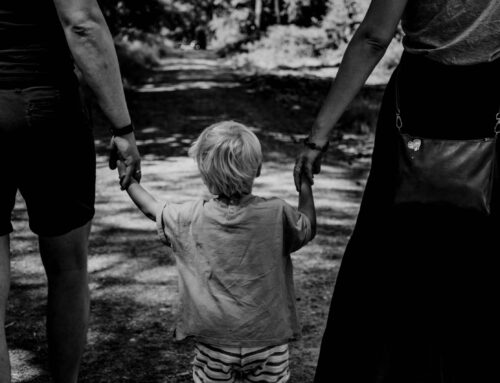One of the biggest mistakes post-divorce dating couples can make is moving too quickly to blend families. My guidance, though hard to follow, is “slow and steady wins the race.” Why do divorced parents rush this process? Divorced parents enjoy the feelings of a new romantic relationship…feeling attractive and desired, adult companionship, fun time away from the kids all can be intoxicating after years in a dissatisfying relationship and then the strains of single parenting. If some time together feels good, won’t more time together feel better? The desire to have more time together as adults can drive the blending process too soon and too fast, especially for kids. Sometimes the short term gain creates long term pain.
Statistics show that in the United States, 50% of first-time marriages, 67% of second marriages, and 74% of third marriages end in divorce. These numbers alone suggest pausing to consider the challenges and complexities of blended families. In order to “beat the odds,” couples need to take slow, thoughtful, intentional steps forward. To that end, I offer five steps to divorced parents in preparation for blending families.
- Before you are even considering dating again, unload your own baggage. Relationships are hard enough without extra baggage. Take time to address your baggage and lighten that load. Don’t bring it all to your next relationship.
- Give yourself time to grieve the loss of your marriage, allow your children time to also grieve and adjust to their new two-home family. Give yourself and your children your attention. Depending on the length of the marriage and the complicating factors involved in the divorce (high conflict, an affair, and yes, children are complicating factors), adjustment can take up to 1-3 years post-divorce. Give yourself and your children time to heal.
- Rebuild your life. Get back on your feet emotionally, financially, and into new routines for the family and for yourself. Reconnect with your friends and with yourself.
- While you’re reconnecting with yourself, gain some insights about your marriage that ended and about your needs, vulnerabilities, and issues in relationships. Learn from what worked and didn’t work. Be ready to show up differently in the next relationship.
- Prepare yourself for the relationship you want to have and being the partner you want to be.
- Educate yourself about relationships; skills for success and common pitfalls.
- The Gottman Institute has great resources for understanding factors that predict divorce and factors that predict relationship success.
- Practice communication, listening, and conflict resolution skills in all of your relationships.
- Once you are dating someone, prepare your relationship. Take a lot of time to learn about each other and focus on growing the partnership first.
- Have you spent several seasons, ups and downs, travel, meeting each other’s friends and family, etc. all as part of getting to know each other?
- Have you learned about each other’s needs, vulnerabilities, quirks, triggers, “love languages” and “attachment” styles?
- Have you navigated through and resolved some conflicts?
- Ideally, you know this person very well, through peaks, valleys and seasons, and believe they are ” a keeper” as a long-term partner and a step-parent.
- Only then, after step 3, prepare to blend families. Introduce children to your partner slowly and gradually over time.
- Monitor how your children react to time with your partner. Keep a look out for competition for your attention and time, jealousy, and loyalty conflicts. Talk openly with children about their feelings and needs. Discuss with children and prepare them in advance for each new step you and your partner would like to take.
- Understand that your children don’t feel the same way that you do about this person. Allow them to have their own separate feelings and experiences of this person.
- Recognize that you having a new relationship represents another loss for children. Loss of the dream their parents will get together again and loss of your undivided attention on them.
- Make sure to continue to set aside time to spend just with your children and give them your undivided attention.
- Understand the unique challenges of step-families.
- Accept these likely realities: the parent-child bond pre-existed your bond with your partner; your child will love you more than they love their step-parent; all relationships in the blended family will not be equally close ( some dyads will get along better than others).
- Resist forcing everyone to all like each other right away. Relationships take time to develop. Just because you like your partner doesn’t mean that everyone else involved will follow suit. Have realistic expectations regarding the various dyads in the blended family.
- Hot-button issues in any marriage, such as parenting and finances, are even more complicated in blended families. Discuss issues such as parenting and money well in advance of blending to clarify expectations, policies, and procedures.
- Clarify roles of parent, step-parent, and co-parent when it comes to time together, discipline, and payment for child expenses.
- Acknowledge the complexity of the various dyadic relationships and offer patience and grace. Think about it; step-parent to child, parent to child, coparent to child, parent to coparent, step parent to coparent, child to step sibling. You get the idea; there’s a lot going on!
- Get support! Consider counseling, coaching, and/ or reading (The Step-Family Handbook and The Remarriage Manual are great options) to support the blending process.
I hope I’ve made the case for slow and steady wins the race. Thoughtful time spent on the front end before and during blending pays off long term. It will be much easier to build upon small growth and successes than to back up after significant conflicts have arisen. Give yourself the best chance to beat the statistical odds by considering these five factors. Make the blended family challenge a positive opportunity for growth for you and your big, beautiful, blended family.






